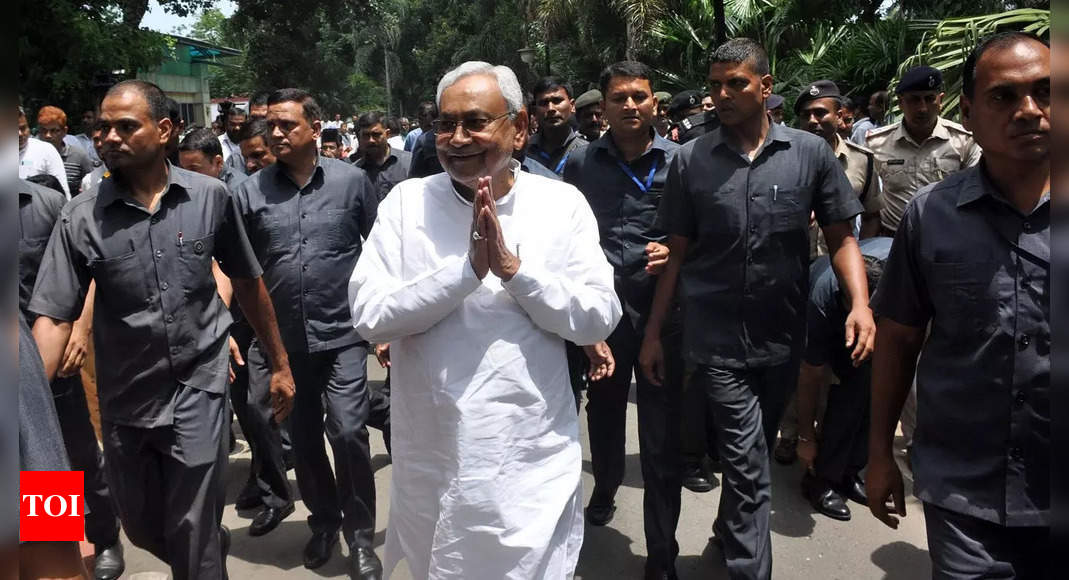
India cuts time taken for disposal of commercial cases by 50% | India News
[ad_1]
NEW DELHI: Contrary to the situation prevailing in courts across the country, which have a pendency pile of more than 4.8 crore cases, India has made a remarkable progress in enforcement of contracts, bringing down the time taken for disposal of commercial cases from 1,445 days in 2020 to 626 days in 2022 – reducing the period by more than 50%.
According to latest data shared by the law ministry on its website, there is almost a certainty for settlement of all commercial disputes in 626 days, on average, in Mumbai and 744 days in Delhi. This includes the time taken for filing of the case, trial and finally enforcement of the judgment.
The enforcement of contracts was a major drag on India’s ranking in the World Bank’s ‘ease of doing business’. Though it had improved significantly from 142nd position (among 192 economies) in 2014 to 63rd in 2020, the not-so-satisfactory situation was largely due to India’s slow pace of justice delivery system. India’s ranking on ‘enforcement of contract’ indicator was 163rd in 2020, compared to 186th in 2014.
To make India a lucrative destination for foreign investments, a wide range of reforms were initiated by the Narendra Modi government since 2014, including single-window clearances for industries, rollout of the GST, almost 100% online assessment of Income Tax cases, withdrawal of the retrospective taxation, and introduction of the automated system of e-way bills and customs clearances.
The revamp of the justice delivery system, however, took time despite the Centre setting up commercial courts at the district-level and bringing in related legislative reforms. Repeated adjournments were a major hurdle. The e-filing system, electronic payment facility and setting up a time-limit to all these courts for settlement of cases slowly picked up pace.
According to the law ministry, trial of cases in 2020 took 1,095 days in these commercial courts, which has now been brought down to 306 days. The time taken for filing of cases and serving of summons has also been brought down from 45 days earlier to 15 days now.
Among the judicial reforms initiated, the judges now get flagged through indicator lights when they breach the three-adjournment limit. No more than three adjournments are allowed in a case. A judge is shown green, orange or red light on his/her logbook, depending on the number of adjournments one has given in a case.
Any infringement is recorded and used in performance evaluation of the judge during the time of his or her elevation to a superior court.
According to latest data shared by the law ministry on its website, there is almost a certainty for settlement of all commercial disputes in 626 days, on average, in Mumbai and 744 days in Delhi. This includes the time taken for filing of the case, trial and finally enforcement of the judgment.
The enforcement of contracts was a major drag on India’s ranking in the World Bank’s ‘ease of doing business’. Though it had improved significantly from 142nd position (among 192 economies) in 2014 to 63rd in 2020, the not-so-satisfactory situation was largely due to India’s slow pace of justice delivery system. India’s ranking on ‘enforcement of contract’ indicator was 163rd in 2020, compared to 186th in 2014.
To make India a lucrative destination for foreign investments, a wide range of reforms were initiated by the Narendra Modi government since 2014, including single-window clearances for industries, rollout of the GST, almost 100% online assessment of Income Tax cases, withdrawal of the retrospective taxation, and introduction of the automated system of e-way bills and customs clearances.
The revamp of the justice delivery system, however, took time despite the Centre setting up commercial courts at the district-level and bringing in related legislative reforms. Repeated adjournments were a major hurdle. The e-filing system, electronic payment facility and setting up a time-limit to all these courts for settlement of cases slowly picked up pace.
According to the law ministry, trial of cases in 2020 took 1,095 days in these commercial courts, which has now been brought down to 306 days. The time taken for filing of cases and serving of summons has also been brought down from 45 days earlier to 15 days now.
Among the judicial reforms initiated, the judges now get flagged through indicator lights when they breach the three-adjournment limit. No more than three adjournments are allowed in a case. A judge is shown green, orange or red light on his/her logbook, depending on the number of adjournments one has given in a case.
Any infringement is recorded and used in performance evaluation of the judge during the time of his or her elevation to a superior court.
[ad_2]
Source link


